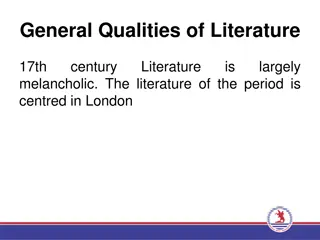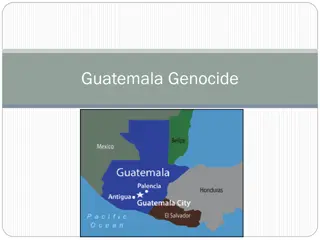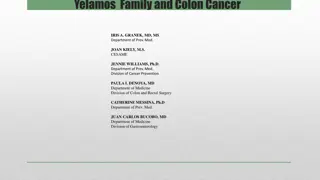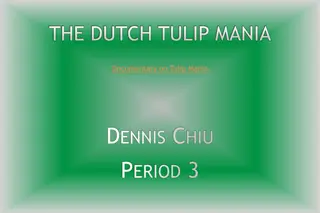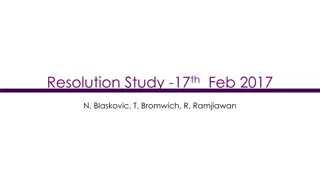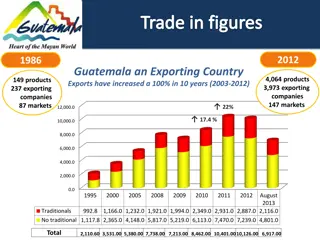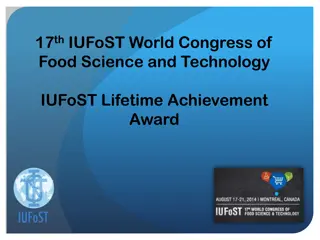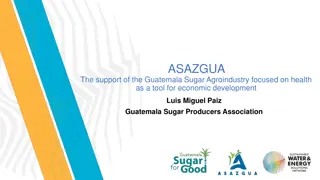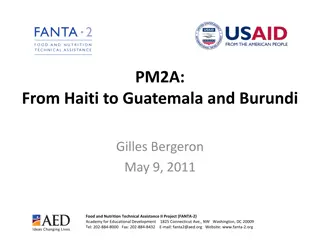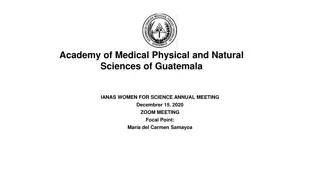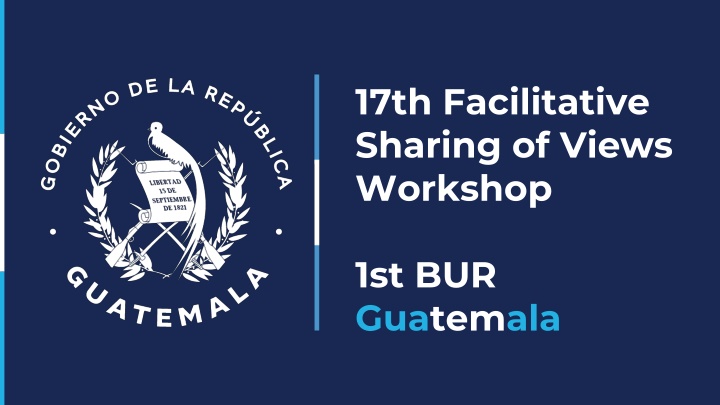
Insights into Guatemala's Climate Change Initiatives
Explore Guatemala's national circumstances, institutional arrangements, MRV system, GHG emissions inventory, mitigation actions, support received and needed for climate change initiatives. The country shows a strong commitment to addressing climate change through various policies and strategies.
Download Presentation

Please find below an Image/Link to download the presentation.
The content on the website is provided AS IS for your information and personal use only. It may not be sold, licensed, or shared on other websites without obtaining consent from the author. If you encounter any issues during the download, it is possible that the publisher has removed the file from their server.
You are allowed to download the files provided on this website for personal or commercial use, subject to the condition that they are used lawfully. All files are the property of their respective owners.
The content on the website is provided AS IS for your information and personal use only. It may not be sold, licensed, or shared on other websites without obtaining consent from the author.
E N D
Presentation Transcript
17th Facilitative Sharing of Views Workshop 1st BUR Guatemala
National circumstances 8 Climate zones Territorial extension 108,889 km2 land + 120,229 km2 marine extension Population 46.2% rural areas 53.8% urban areas 16,346,950 (2021) Main economic activities Forest 3,574,244 ha 17.6% manufacturing industry 15.9% private services 33% of land covered by forest 13.4% agriculture, livestock, forestry and fishing. Main exports 15.9% coffee 10% clothing 13.4% cardamom and banana (ea.)
National circumstances Institutional arrangements Climate Change Framework Law (Decreto 7-2013) National Climate Change Action Plan (PANCC) National Inventory System (SNIGT) National Council of Climate Change (CNCC) National MRV system (SNICC) Sectoral Work Tables
National MRV System 4 sub-systems Information about vulnerability and adaptation Private sector Information about climate sciences Civil society Information about support recieved and requiered Information about GHG emissions NGOs Academia Government
2018 GHG 2.8% CO2 INVENTORY 33.8% HFC 49.6% CH4 N2O 3.2% 713.6kt CO eq 333.1 kt CO eq 9.8 kt CO eq 50,101.9 kt CO eq 10.6%
2018 GHG INVENTORY Comparison to 2005 emissions Emissions in kt CO2eq by sector Increased by 65.5% Energy 20,958.1 Increased by 100.3% IPPU 1,992.8 Increased by 13.9% Agriculture 6,552.9 Decreased by 6.7% LULUCF 30,804.0 Increased by 65.5% Waste 1,750.8
Mitigation actions Nationally Determined Contribution LEDS National Climate Change Action Plan MS National Energy Plan (2017-2032) Energy Efficiency Plan (2019-2032) ENE National policy on cattle ranching National strategy for sustainable and low emisi n cattle ranching AGR REDD+ strategy LUCF
Support recieved (2015- 2020) 50% adaptation 19% mitigation 31% crosscutting USD 332 mil (approx.) 90 projects Support needed Institutional arrangements and policy measures MRV and data generation systems Capacity building on new mechanisms Financial support to implement actions
ETF transition and implementation Support recieved through programmes (CBIT-GSP, Capacity building proyects (CBIT) ICAT, etc.) ETF NDC-specific reporting system MPGs transition process (MARN team) addresing implementation


